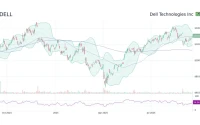The financial data for the Pump.fun platform, specifically its native token, presents a compelling, if dissonant, narrative. Over the last month, the $PUMP token registered a price increase of roughly 56%—to be more exact, 56.4% as of September 29th. This surge was underpinned by significant liquidity, with 24-hour trading volume exceeding the $600 million mark. Such metrics, viewed in isolation, suggest a healthy, growing ecosystem.
This quantitative story is supported by the platform's own forward-looking statements. Management recently announced "Project Ascend," a suite of upgrades intended to bolster the ecosystem. The project’s whitepaper details features like "Dynamic Fees V1," a mechanism that lowers token creation fees as a coin's market cap increases. Other stated goals include delivering "10x higher earnings" and a tenfold increase in the speed of creator fee approvals. On paper, this is a portrait of optimization—a platform maturing, streamlining its operations, and enhancing value for its users. It’s a clean narrative of technical and financial progress.
But data sets are rarely so tidy. A concurrent stream of qualitative data paints a profoundly different picture. As of this morning, four of the top 15 trending tokens on the aggregator DEXScreener were coins launched on the Pump.fun platform. A common characteristic tied them together: their names and associated memes contained explicit racial slurs or derogatory allusions to skin color. This is not an outlier event but an observable pattern, a continuation of past incidents involving tokens like "Hitler Musk" and "Swasticoin."
The dissonance is jarring. One data set points to a sophisticated financial instrument achieving significant market traction. The other points to a digital petri dish for some of the most odious content imaginable. And somewhere in the middle, we have anecdotal reports of enthusiasts vandalizing the Hollywood sign with a Pump.fun banner, an act of physical-world evangelism for a digital platform. The question for any sober analyst is how to reconcile these two realities. Are they correlated? Is one a consequence of the other?
Measuring the Factory, Not the Product
An Analysis of Conflicting Signals
To understand the disconnect, we must first clarify what Pump.fun is. At its core, it is a tool on the Solana blockchain designed to radically simplify the process of creating and launching a meme coin. It removes technical and financial barriers, making the process nearly instantaneous and affordable. "Project Ascend," then, is not an effort to change this core function. It is an effort to make it more efficient.
Let’s deconstruct the "Dynamic Fees" proposal. The system is designed to reward tokens that achieve rapid market capitalization growth (a system designed to reward rapid, early speculation, not long-term value). This directly incentivizes creators to focus on whatever tactics generate the most immediate, explosive attention. It optimizes for virality above all else. The platform's mechanics are indifferent to the substance of the token; they only measure the velocity of its initial ascent.

This is the part of the analysis that I find genuinely puzzling from a risk management perspective. I've examined hundreds of platform growth strategies, and it is exceptionally rare to see one so completely decoupled from any form of content or product quality control. The platform's architecture appears to treat all engagement as equal. A billion-dollar market cap for a coin named after a racial slur is measured as a greater success than a million-dollar cap for a clever, inoffensive meme. The algorithm, as designed, is amoral.
The resulting output is, therefore, predictable. When you build a frictionless machine for creating attention-grabbing assets and reward only the velocity of that attention, the content will inevitably trend toward the most provocative and shocking material. The racist tokens are not a bug in the system; they are a logical outcome of its incentive structure. They are a feature.
This brings us to the methodological critique of the platform's success metrics. Is a 56% rise in the `pump.fun coin` price a validation of its technology? Or is it simply the market pricing in the platform's effectiveness as a chaos engine? The $600 million in trading volume is impressive, but it represents the churn of countless micro-cap tokens, the vast majority of which are designed to exist for days, if not hours. We are measuring the efficiency of the factory, not the utility or durability of its products. The community chatter, which I treat as a qualitative, anecdotal data set, reflects this tension. Widespread concern is quantifiable in forum threads and social media posts, echoing criticisms made by figures like Vitalik Buterin over a year ago regarding similar phenomena. It signals a growing reputational liability that does not yet appear on any financial statement.
The market is rewarding Pump.fun for perfecting a specific process: the high-speed, low-cost manufacturing of speculative, ephemeral assets. The upgrades in "Project Ascend" will make this process even more efficient. The financial data is correct. The qualitative data is also correct. The core analytical error is to assume they are in conflict. They are, in fact, telling the exact same story.
---
An Unreconciled Liability
The numbers presented by Pump.fun are not false, but they are incomplete. The platform's valuation is rising in direct correlation with its efficiency at facilitating financial nihilism. The racist and offensive tokens are not an unfortunate side effect; they are a clear manifestation of a system that rewards shock value over substance. The market is currently celebrating the platform's ability to minimize friction. It has not yet priced in the inevitable cost of hosting and profiting from the ugliest corners of internet culture. The ledger shows a significant asset, but it ignores a growing, unaudited liability.
Reference article source:









